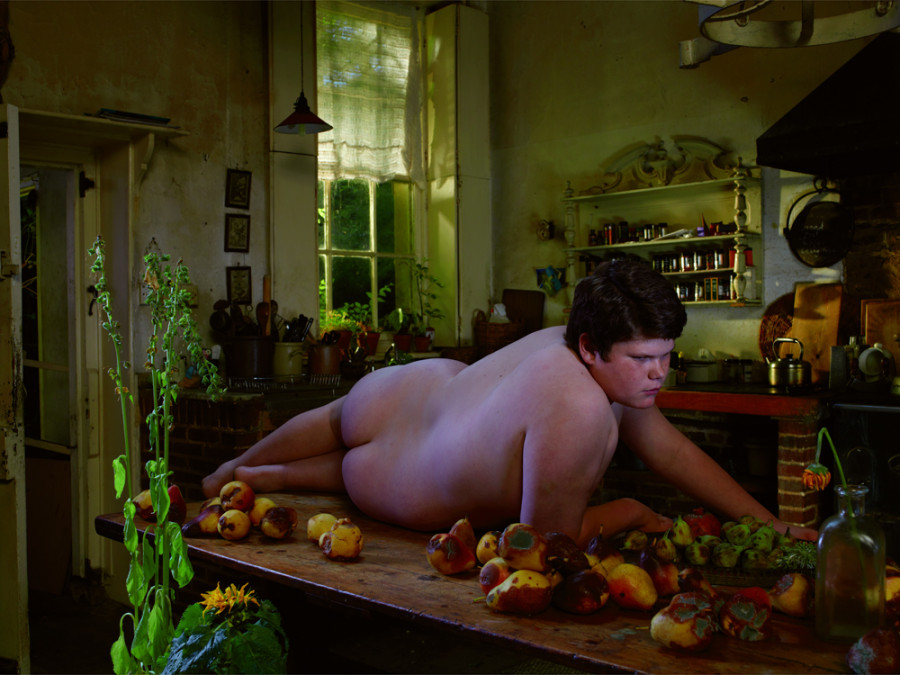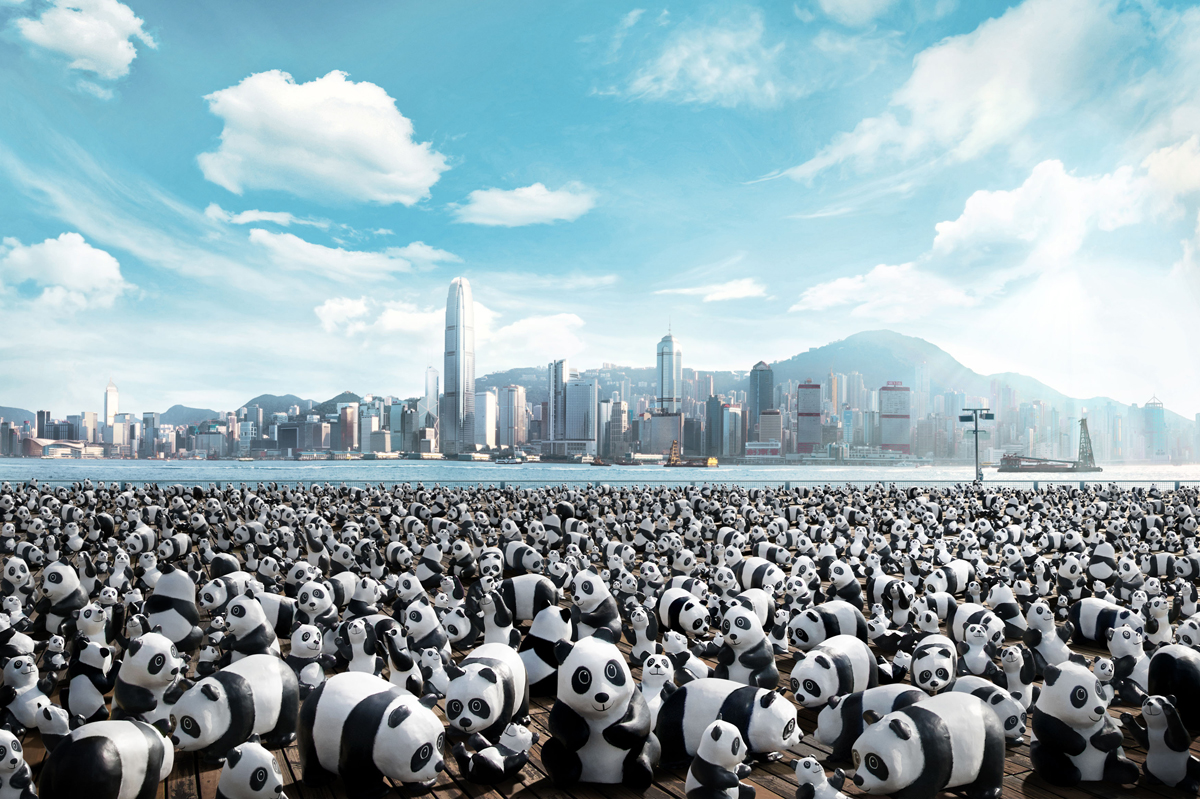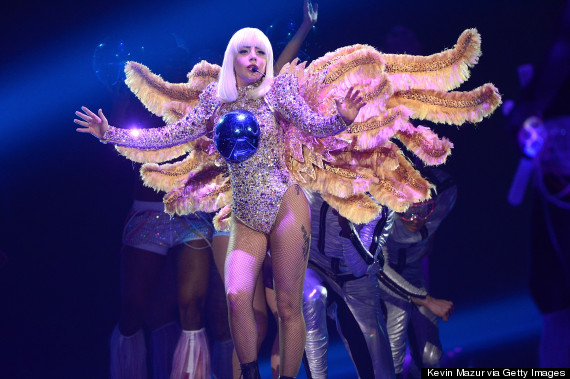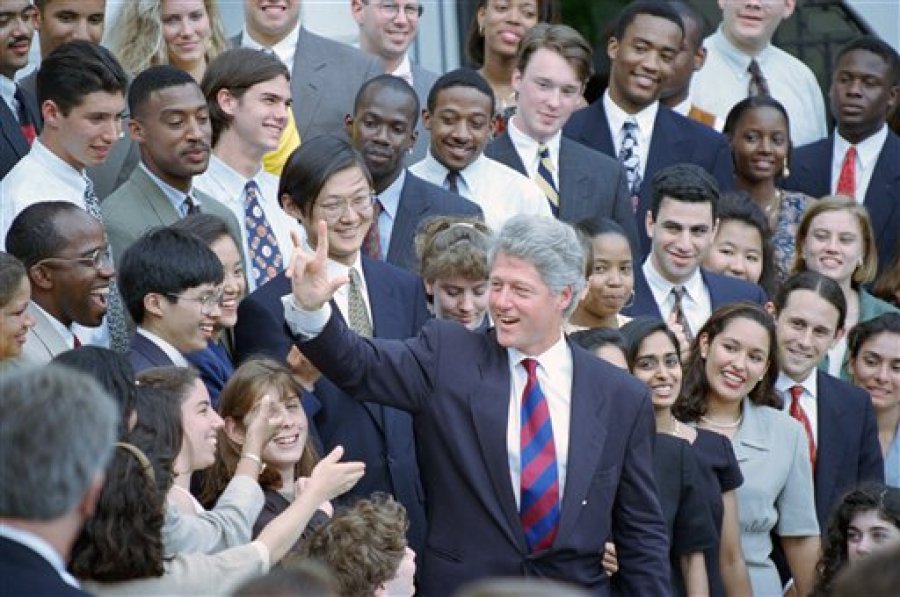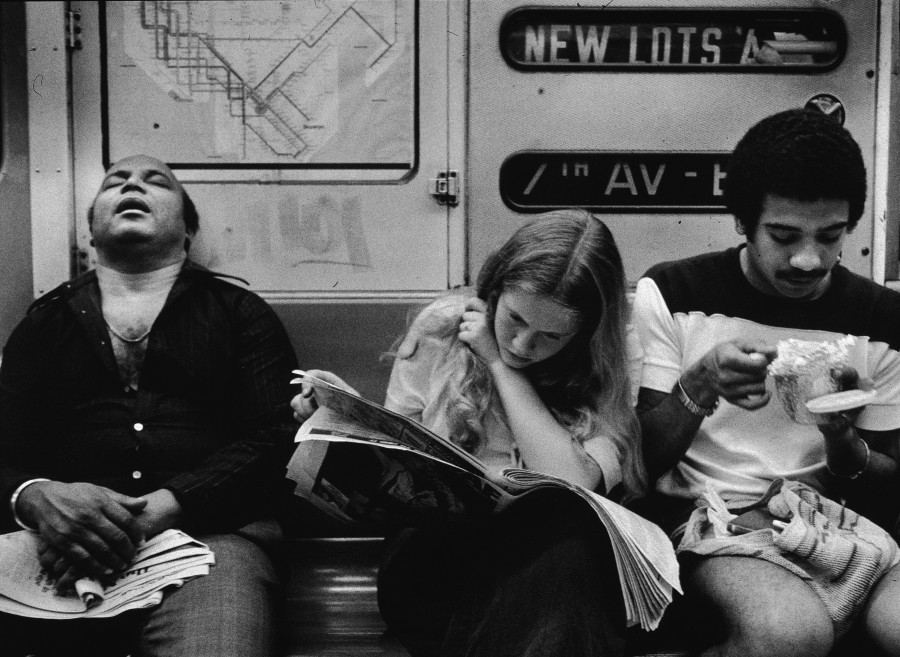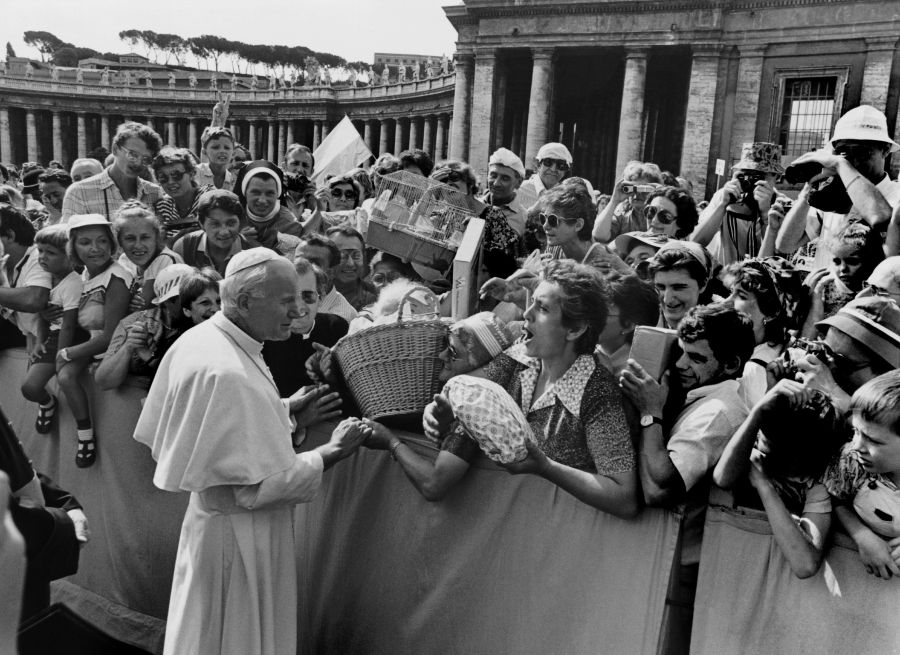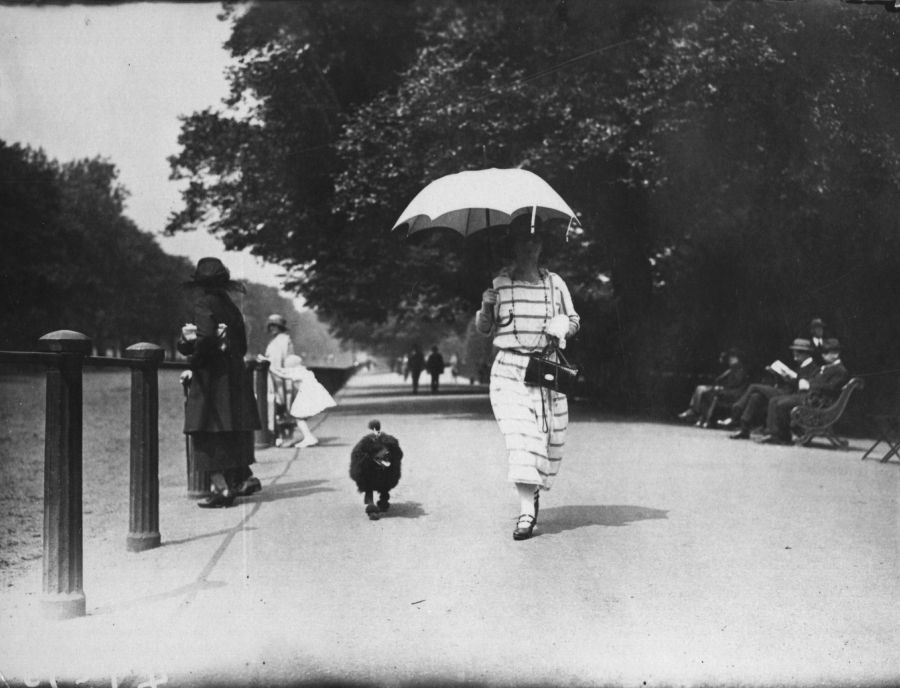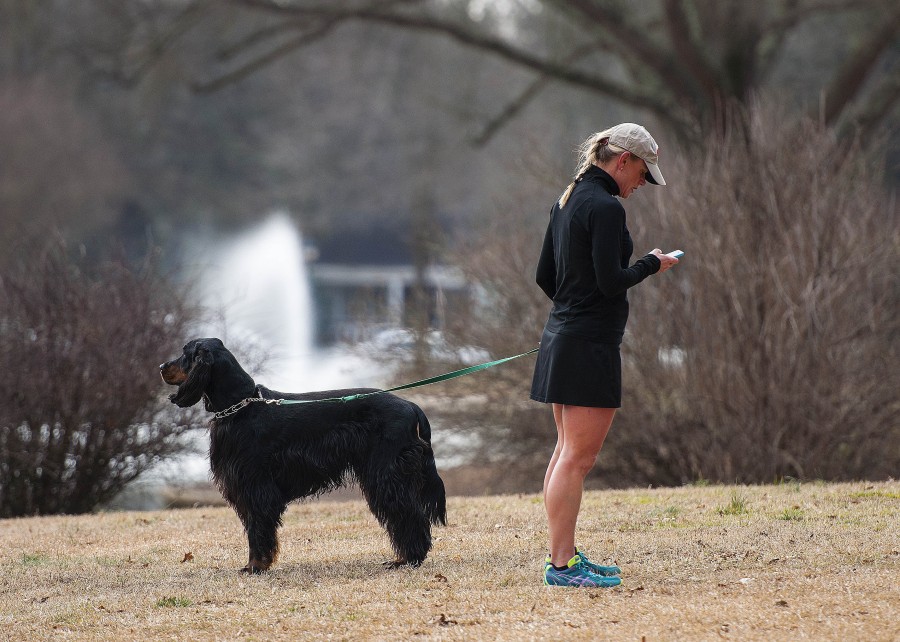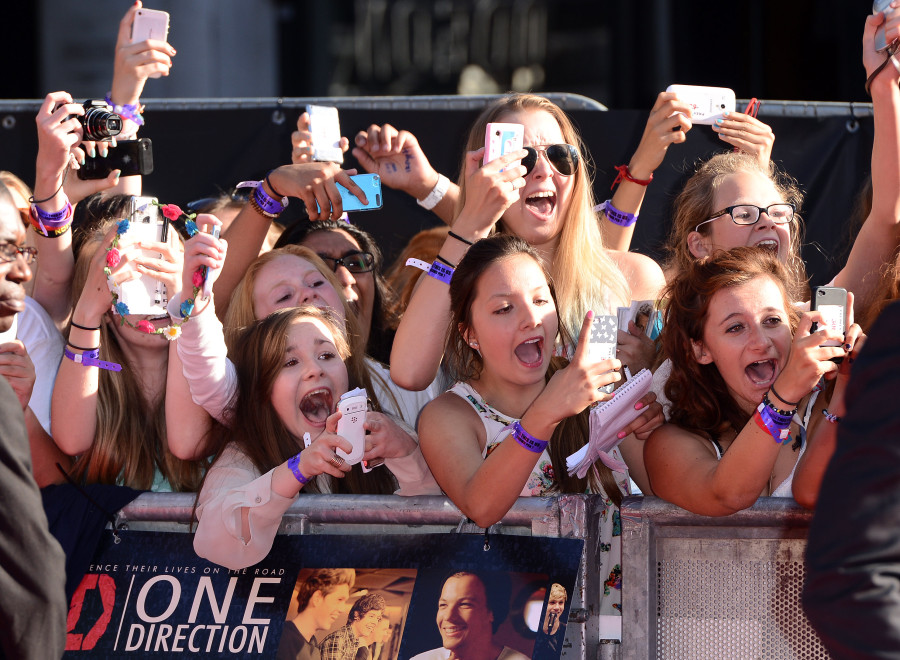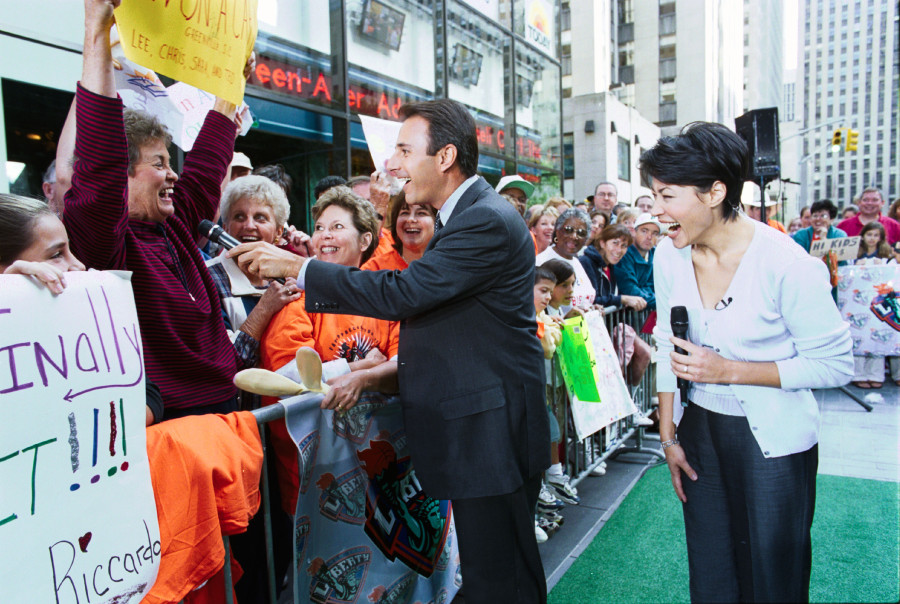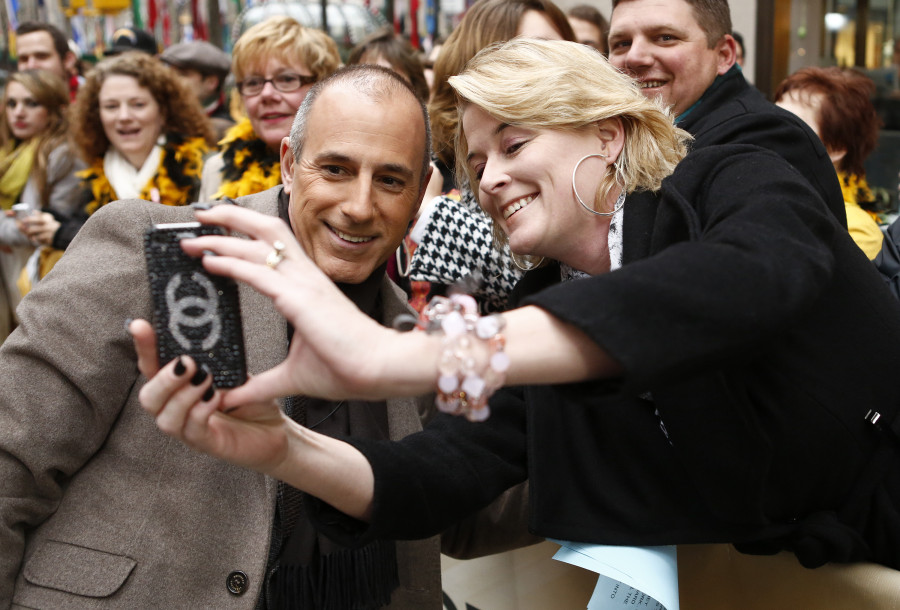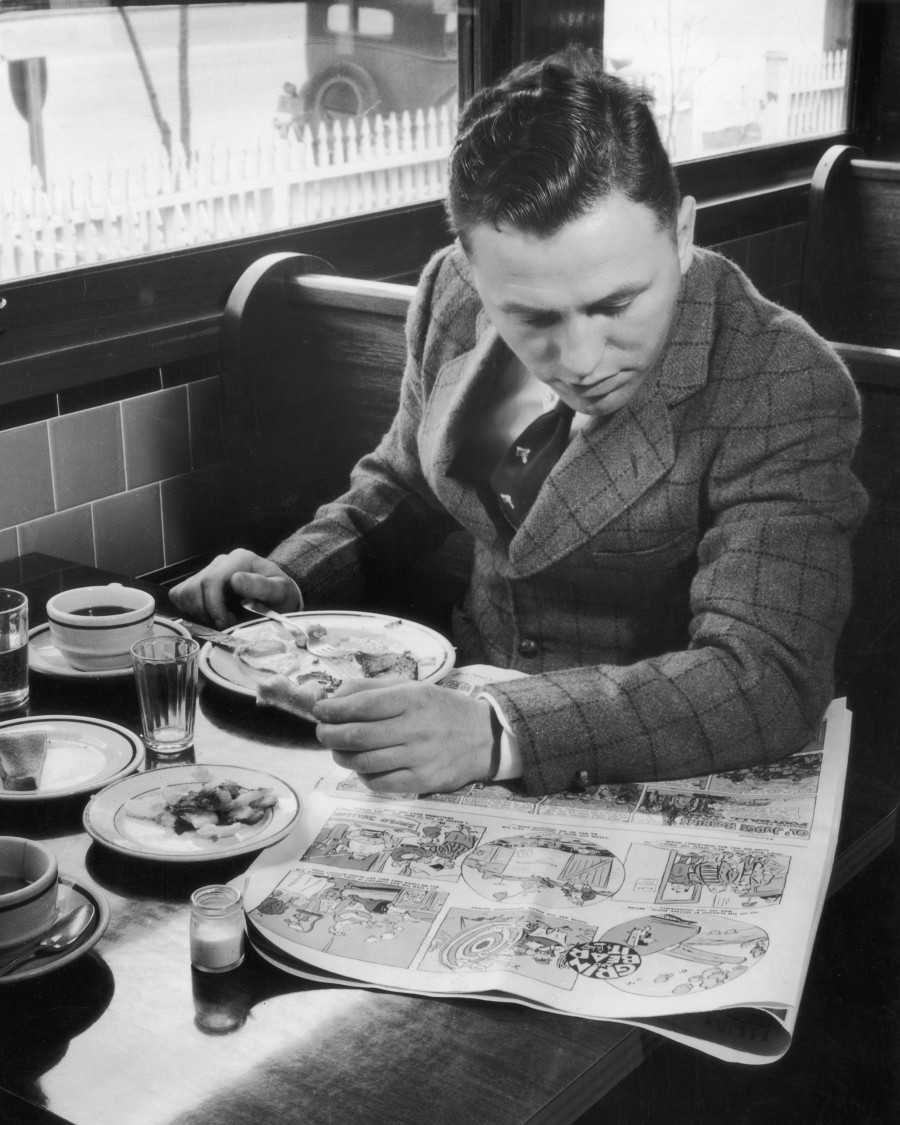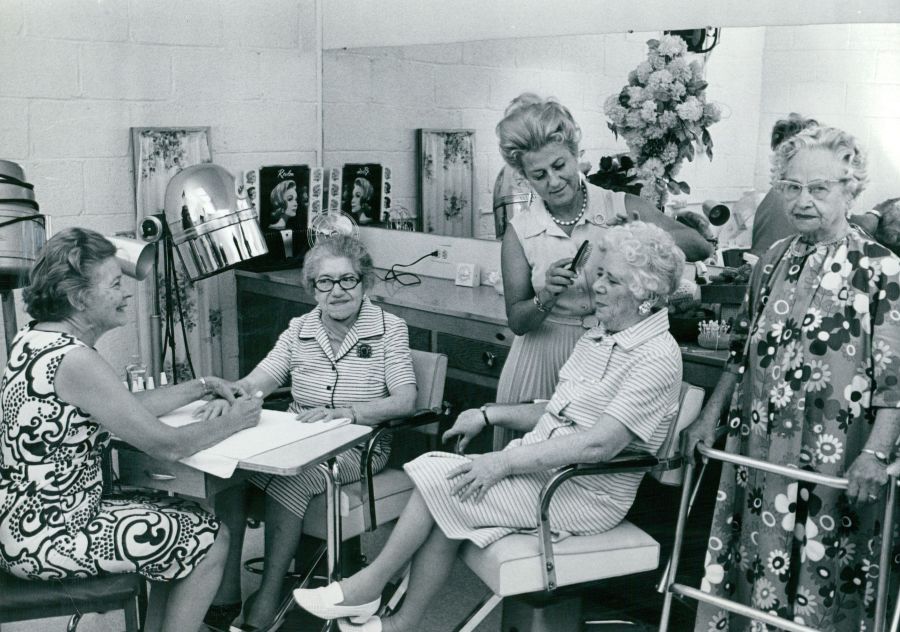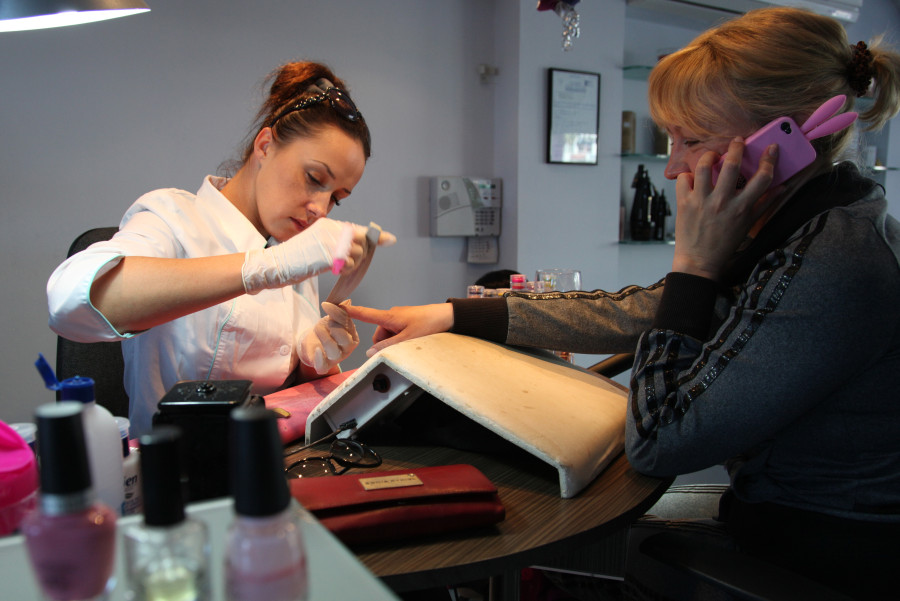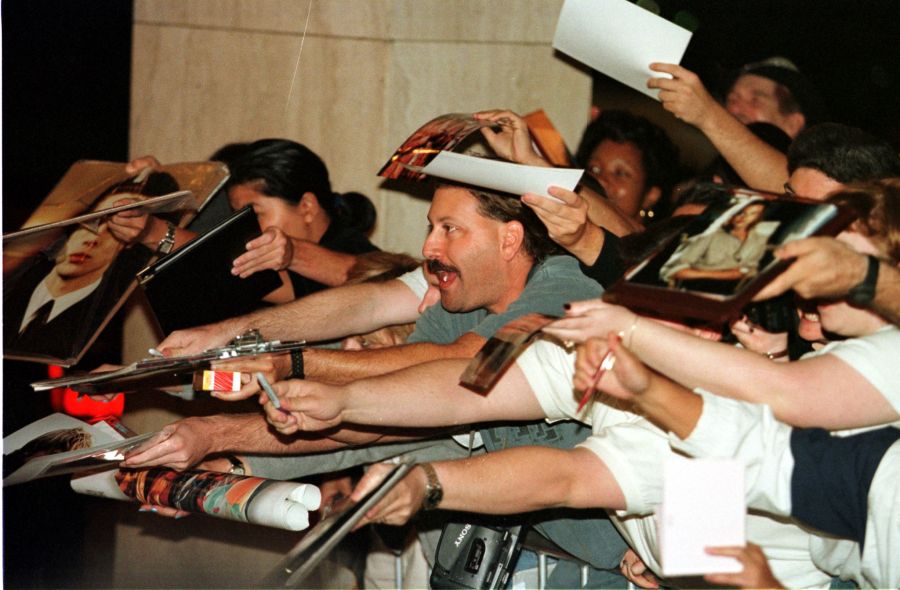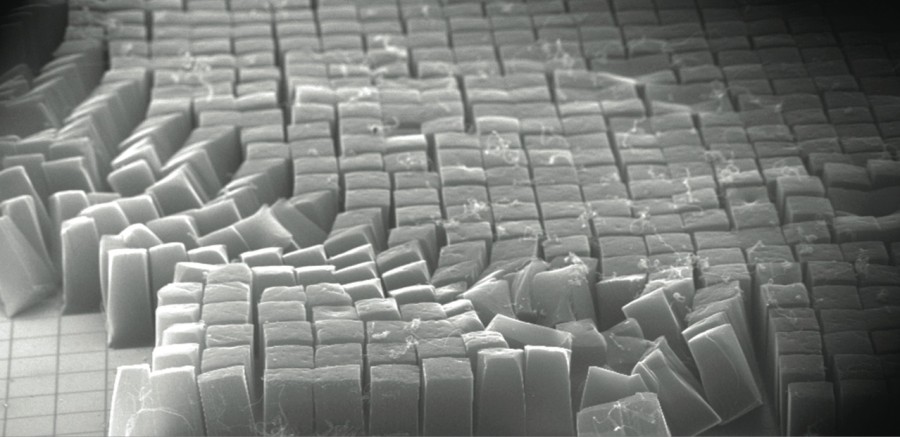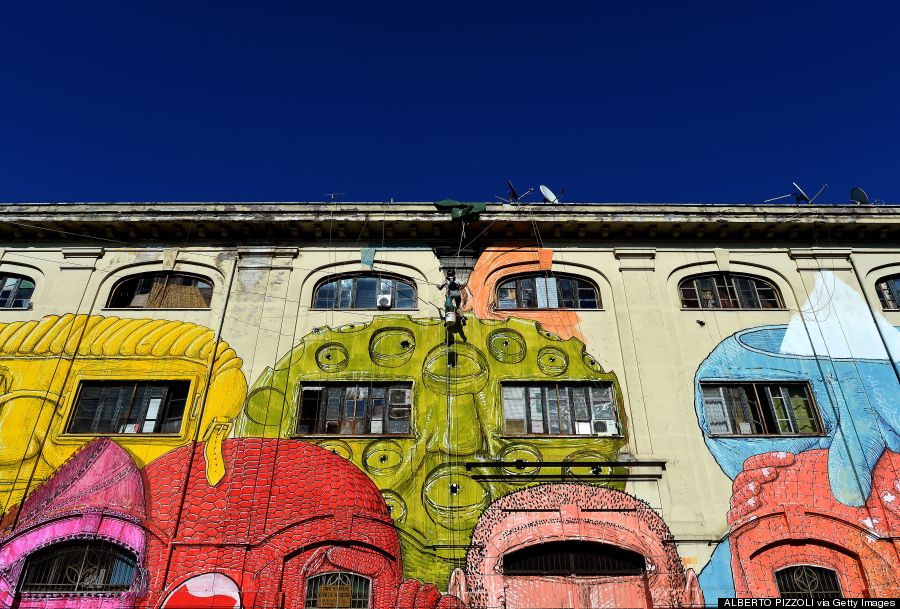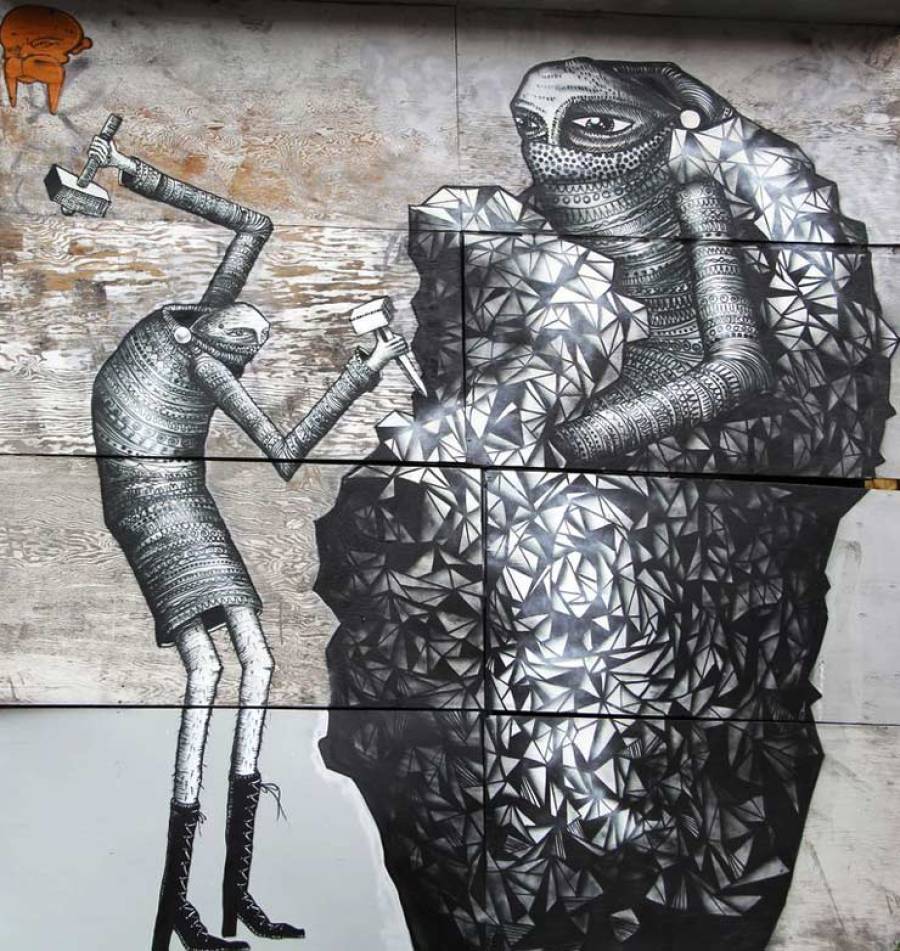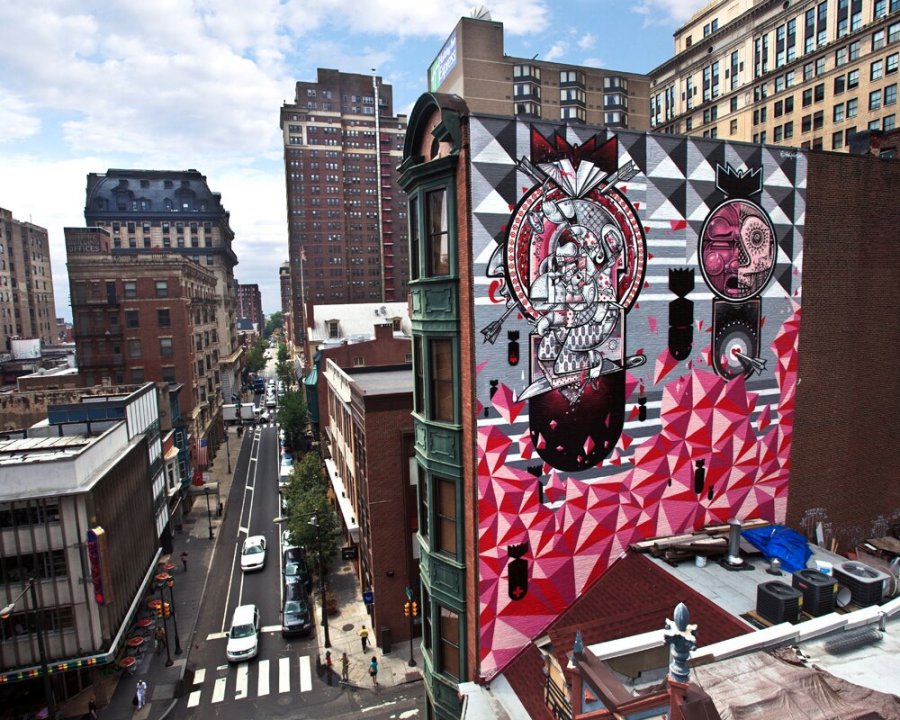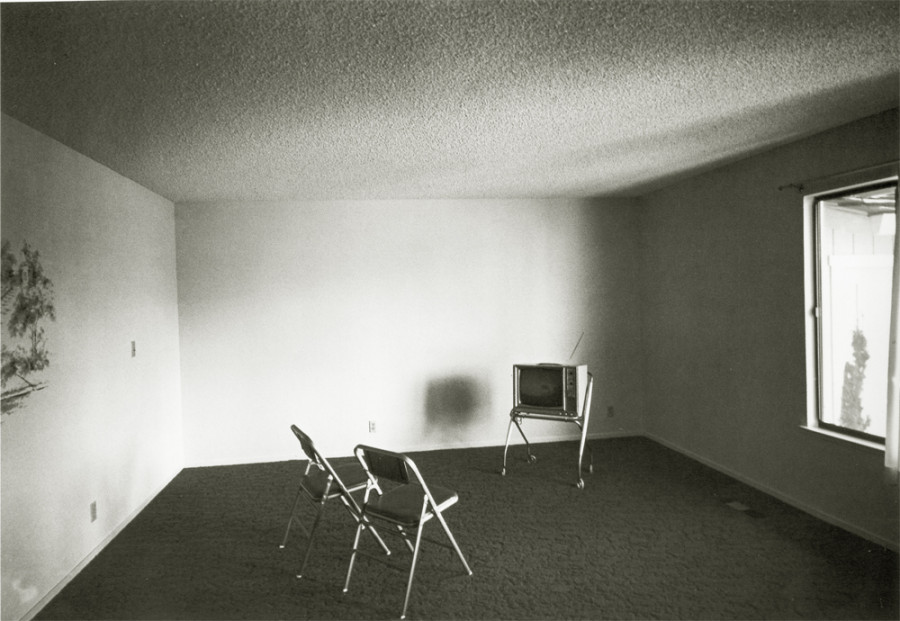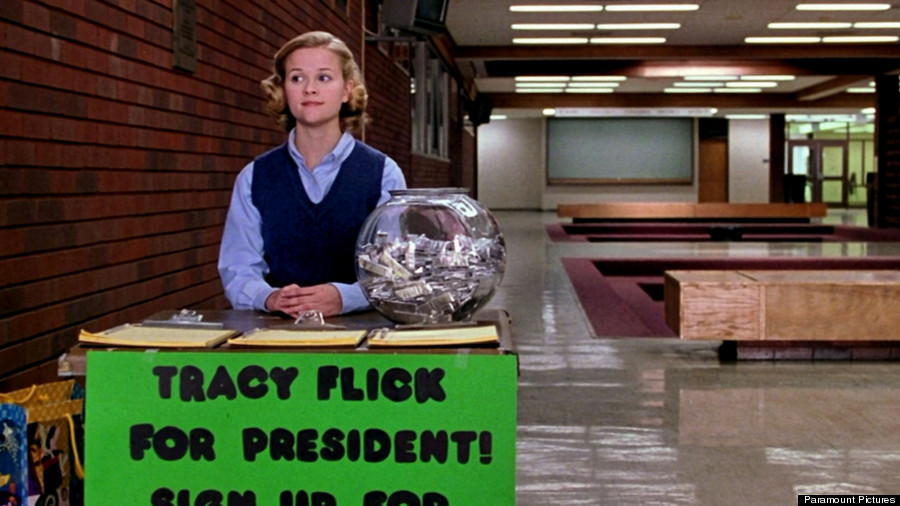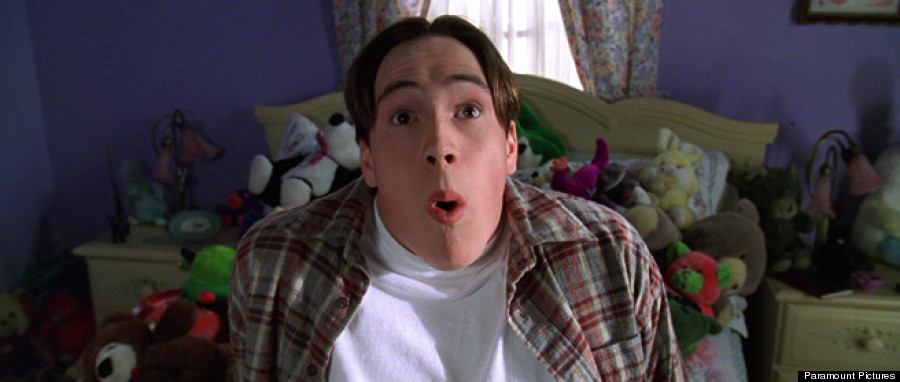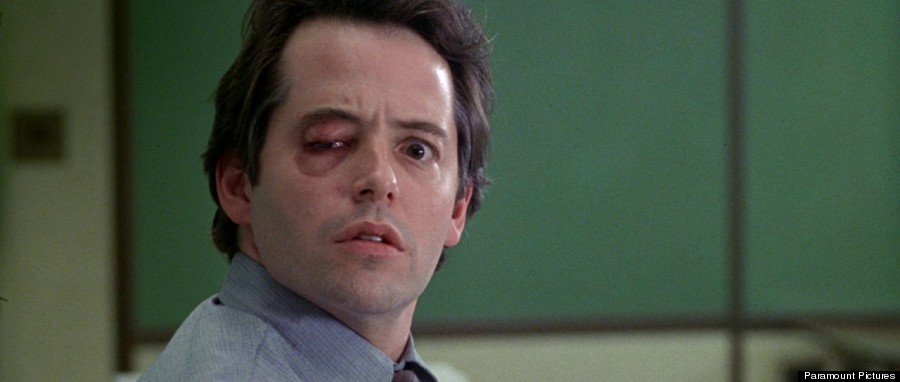![election]()
In April 1999, when "Election" opened in limited release, moviegoers were only just getting to know Reese Witherspoon. "Man in the Moon," "Fear" and "Pleasantville" had provided glimpses of the actress, but it was in March of that year, when "Cruel Intentions" opened, that Witherspoon began to emerge as a household name. And then, along came Tracy Flick, the high-strung high schooler who would stop at nothing to be elected student body president. That character, and Witherspoon, became part of the pop culture lexicon -- despite originally hailing from a novel that almost didn't get published, a director whose
first movie failed to gross $1 million at the box office and a marketing campaign that teetered somewhere between ineffective and disastrous.
In spite of all that,
"Election" has prevailed as a defining film for millennials as well as major-studio projects that employ indie sensibilities (it was produced by MTV Films and distributed by Paramount). Perhaps it was thanks to Matthew Broderick, who received top billing as the well-liked teacher fed up with Tracy's manipulation and overzealousness. Maybe it was the modesty displayed by Chris Klein and Jessica Campbell, unknown actors cast to play the sibling duo that would challenge Tracy in the heated race. This is to say nothing of Witherspoon, whose manic performance etched itself among the
greatest screen characters of the '90s, nor director Alexander Payne, who would soon become one of Hollywood's most respected auteurs. Whatever the concoction was, "Election" has become a modern cult classic.
Witherspoon earned a Golden Globe nomination, Payne and co-writer Jim Taylor grabbed an Oscar nomination for Best Adapted Screenplay and the movie took home Best Film at the Independent Spirit Awards. It's proof that a film's longevity is not inherently tied to big budgets or massive box office receipts. Fifteen years later, and "Election" still ranks among the most memorable releases of the past two decades. HuffPost Entertainment caught up with many of the movie's major players for a look back at how it came together and why it remains a force in pop culture.
Alexander Payne, co-writer/director: The producers, Ron Yerxa and Albert Berger, sent me an unpublished manuscript called “Election.” This was in 1996, I think. I didn’t read it for a long time because there were a lot of high school movies at the time. I couldn’t be less interested in making a high school movie. And then finally I read it and I liked it. It was set in a high school, but it wasn’t a high school story, per se. Also what attracted me was the formal exercise of doing a movie with multiple points of view and multiple voice-overs.
Tom Perrotta, novelist: The book came out of my obsession with the 1992 presidential election. I was unemployed and got caught up in that race. And that was, of course, the Ross Perot year, so there were three main candidates [Perot, Bill Clinton and George H.W. Bush]. When it was over, I just felt a little bit bereft. I thought I wanted to write a political novel, but I don’t know anything about politics that anybody else doesn’t know.
Van Toffler, executive producer and current president of MTV: That year, the three movies we tried to get made were “Election,” “Go” from Doug Liman and “Being John Malkovich” from Spike Jonze and Charlie Kaufman. “Election” was the one we got made. The whole premise behind MTV Films was that we can make movies differently than everyone else, talk to our audience of young people uniquely and take chances on new writers, new filmmakers, new visionaries, and not go through the Hollywood system. “Election” fit squarely in terms of where the brand was going. No one had done anything like that. Alexander was someone we had all met and felt, based on “Citizen Ruth” [Payne's first film], had a vision and was going to be a force to be reckoned with for many years to go.
Perrotta: I was having trouble getting people to take it seriously as an adult novel. After a while, I just gave up. So it was just sitting in my drawer and I started to write another book called “The Wishbones.” I gave a reading of “The Wishbones” at the Bread Loaf Writers' Conference. There was a writer named Janet Shapiro in the audience, and she really liked “The Wishbones” and thought it had movie potential. She said I should get in touch with these producer friends of hers, Albert Berger and Ron Yerxa of Bona Fide Productions. I told them it wasn’t done yet but when it was I’d be happy to show it to them. But I said I had another book sitting in a drawer that could be an interesting movie. So I sent it to them, and they were intrigued by it and they went to David Gale at MTV Films.
Jim Taylor, co-writer: As soon as I read it, I knew that it was perfect material for us. I wished I could say that’s happened a lot over the years, but it hasn’t. It’s sort of a unique experience.
Toffler: It was not an easy movie to get made in a major studio system. Let me just say that I remember being called and lectured at home on a weekend about what I was thinking trying to make what [Paramount Pictures] viewed as a hard R movie based in a high school, where pages were read to me like I’m a crazy man. Why would I think of making an R-rated movie in a high school? It wasn’t a typical Freddie Prinze-like high school movie, as you can tell. At that point, if you were going to make a high school movie, it should be PG-13, not R.
Taylor: [The book is] written in a very distinctive form, which is first-person for each of the characters, and I think it’s about 16 characters and their mini-chapters are headed with the characters’ names. There aren’t a lot of movies that do that, and thankfully that was signed off on by people at MTV and Paramount. But we obviously didn’t want to do all those characters, so we just honed in on four.
Those four were social-studies teacher Jim McAllister (aka Mr. M), ambitious Tracy Flick, earnest Paul Metzler and disillusioned Tammy Metzler. [HuffPost Entertainment was unable to get in touch with Jessica Campbell, who played Tammy and is no longer active in show business.]
![matthew broderick election]() Payne:
Payne: It was my first studio film, and Paramount put me through a number of casting hurdles: Meet this guy, meet that guy. Offer it to Tom Cruise, offer it to Tom Hanks. All these things which are a big time-waster as far as I’m concerned. But one actor we all could agree upon ultimately was Matthew Broderick. I met with him and he was only too happy to do the part, and I’m so glad he did. I never thought Tom Cruise would have been right for the part. Tom Hanks is a wonderful actor, but I knew at the time there was no way in hell he would take the part. It just felt right that we eventually got to Matthew Broderick.
Matthew Broderick, actor (Jim McAllister): Even with scripts that are wonderful, it’s always hard. But I remember reading that and thinking it was an interesting story -- the dialogue and all of it. I didn’t have a job at the time I read it, and I thought, “Shit, I wish I could get jobs like that.” I think my then-manager sent it to me, and it was not an offer, but he was like, “This is really good and you should read it.” I think there were other actors who were still deciding. I loved it, and the next step was to meet with Alexander. I think whoever it was [up for the part] had said no or wasn’t deciding, so they gave it to me.
Perrotta: He’s amazing in the movie, but my first reaction was that he was too sweet because there was something a little bit impish about him in his younger roles. But I learned an important lesson, which is to trust good directors to cast the right actor, because I was a little skeptical about Matthew.
Reese Witherspoon, actress (Tracy Flick): I was frankly very intimated by him. I had done a few movies by then, probably about six, but my career was only just starting to get a little bit of momentum, so this opportunity to work with Matthew was great. We were a little adversarial in the movie, so it wasn’t like we were suddenly chums. We had a good relationship, which is very funny, but it was always a little bit about keeping that tension for the sake of the movie.
Toffler: We had some bigger debates, David Gale and I, who was working for me running MTV Films at the time, about the casting. I guess it’s public about changing Tammy, the sister, who was a newcomer, too. We had somebody else in the part. I think it was Thora Birch.
Payne: I cast Jessica off a tape from St. Louis.
It turns out Witherspoon would have loved to play Tammy, too. The actress told the Los Angeles Times in 1999 that upon entering the audition, she didn't know if she wanted the role of Tracy or Tammy, Paul Metzler's rebellious sister who enters the race just to spite her brother for hooking up with Lisa Flanagan, Tammy's romantic interest. "That speech alone made me want to play Tammy," Witherspoon said of the campaign-speech assembly scene.
Witherspoon: I read the script and I had seen Alexander Payne’s first film, “Citizen Ruth,” at the Sundance Film Festival. I thought it was so hysterical and I loved his perspective. And then I went in to audition for him. I remember he had a suit and tie on, and I said, “What’s the occasion?” And he said, “It’s Tuesday!” But I just remember the audition, and I said, “I don’t know who you’re thinking about for this part, but it’s me.” I think I had a little bit of Tracy Flick going on in the audition, but he ended up casting me.
Payne: Reese Witherspoon, I was somewhat familiar with because of “Man in the Moon” and “Freeway,” and I met her. She came in for a meeting, and I was very, very impressed by her.
Broderick: Reese was already cast in it, and they were very excited about her. I, being a person who just watches old TV, did not know who that was. I think the first time I met her was when we went down to Omaha and started rehearsing. I immediately thought she was wonderful and hilarious and just very original, all in this little cute package. You didn’t expect this terrorist to come out.
Perrotta: Alexander took a slightly different take on the character of Tracy Flick than exists in the book. My Tracy is a little bit more of a sexual manipulator, and Reese’s Tracy is more of a go-getter who’s a little bit over her head when it comes to sexual matters. It ultimately was a good change for the movie.
Chris Klein, actor (Paul Metzler): The principal of my high school, Dr. Rick Kolowski, in Omaha, Nebraska, was a huge, huge proponent of arts education, so we had wonderful opportunities to sing and dance and act. Alexander Payne was scouting our high school as a location for “Election.” Dr. Rick Kolowski made sure that he introduced this Hollywood director to the resident theater guy, and I had made quite a name for myself from all the high school plays and then in the community theater. So he made that introduction, and a couple weeks later Alexander Payne called me up at my folks’ house and brought me in to audition for the movie.
Payne: A couple of months went by, months during which I returned to L.A., auditioned a bunch of potential Pauls, and I didn’t like any of them. When you’re trying to cast teenagers in Los Angeles, they all seem too polished, too old, too sophisticated. They don’t feel like actual kids. So I went back to Omaha and called up the high school. I didn’t remember the guy’s name. I just described who he was. They got him a message, he met me at the office of the Omaha Film Commission, and that’s how we discovered Chris Klein.
Klein: After I read the script, I called Alexander Payne and I told him I couldn’t make the movie. He said, “Why can’t you make the movie?” And I said, “Well, it’s a movie and my grandma’s going to see it, and there’s a scene where my character gets a blow job, and I can’t have my grandma see me getting a blow job.” And Alexander Payne laughed and said, “Okay, kid, listen. We’ll take care of it. Just come and do the movie. Just trust me.”
![election chris klein]() Broderick:
Broderick: I remember when we had our first rehearsal thinking how good Chris Klein was. It was nice to see that Alexander had cast somebody who hadn’t done anything and who was so good.
Klein: We get started, and for the very first time, I put two and two together and I said, “Wait a minute. They don’t play the music during the shoot? All the scenes in movies have music. How come they don’t play the music? Oh, shit. They put the music in after. Oh, that means I’m actually going to have to manufacture real feelings without the aid of music.” So that was that revelation: that they actually laid the music in after they shoot the movie. I will be forever grateful to [Alexander] and of course never forgive him for launching me into the zany world of Hollywood.
Payne: I toured almost every high school in Omaha and selected one high school and was forbidden to shoot there because the superintendent of Omaha public schools asked to read the script and was horrified by it. So he forbade my using any high school in the Omaha public-school system because he said we would never have a student and a teacher having an affair and some of the immoral behavior he didn’t want associated. We found a happy home at Papillion La Vista High School, which is in a part of town called Papillion, Nebraska. We shot while school was in session, in the fall of 1997.
Broderick: To me, it was like Mars. I went to a little school in Greenwich Village, so this cavernous place with gyms and football fields was unusual to me.
Toffler: We really liked Alexander and Jim’s take on Tom Perrotta’s book, and he had a very distinct visual style, which you saw in the movie with a lot of the freeze-frame stuff and the voice-over technique.
Payne: Finding the most unflattering [freeze frames], particularly on Reese, just came between [editor Kevin Tent] and me in the cutting room. It’s both funny that you would pick the freeze frame that normally everyone else would reject because it’s so unflattering, and also it seemed appropriate that Jim McAllister would focus on a very unflattering aspect of Tracy Flick.
Witherspoon: [The freeze frames were] news to me. When I saw the movie, I was in shock. I thought, "
What?" I didn’t understand. I didn’t think that was going to happen. It was fantastic. By freezing her in isolation, it creates an energy and makes her stronger and more important of a character.
Taylor: Probably the hardest thing was this big backstory between Tracy and her teacher, played by Mark Harelik, the one she sleeps with. So that ended up being this quite long flashback, film-within-a-film thing. Still, we were trying to have some fun. With Tracy in particular, we were seeing how her mother pushes her and gives her some meds when she’s not feeling well.
Witherspoon: We had a really interesting time tearing down the posters. In the scene afterward, Alexander wanted me to make this face like something out of “Psycho.” I go to the bathroom afterward and I’m just scrubbing my hands like Lady Macbeth. And he says, “I want you to lean against the wall and I want you to melt like Janet Leigh in ‘Psycho.’” And all I could think was that it was really funny. I always laughed at his directions because he’s a really funny guy. He made all these animal analogies, like, “Okay, you’re going to walk through the hall like a panther.” And one scene I remember doing was when she realizes she won: The moment was like an eighth of a page and it said, “Tracy realizes that she won and celebrates silently to herself.” And Alexander said, “Why don’t you actually jump up and down?” So I started jumping up and down. “No, no, put your legs together. I want you to jump up and down like you’re a human pogo stick.” And I’m going, “Really?” And in that scene it’s just a hysterical thing.
Payne: We had a couple of different scenes with the all-school assembly. We did that shoot on a Saturday, and I think we did not get enough students to fill it, so we had to use all the students on one side of the gymnasium and then mix them up and put those same students on the other side. I needed one shot that showed all of them together, and that is the first shot of the scene in which the winners are announced, when Matthew Broderick’s eye is already swollen and Tracy mistakenly stands up. So that sequence begins with a very wide shot tilting down from the ceiling and you see both sides of the gymnasium filled. This is, again, how lovely the principal and administration were: They called an assembly during school just so I could get that shot.
Broderick: I remember shooting those big assembly scenes. The awkward thing is that when they get to your coverage or your close-up, that whole crowd is gone. Not for all the shots, but for some angles you have to pretend there are 1,000 people cheering you.
![election matthew broderick]() Perrotta:
Perrotta: Of the changes to the novel, [Mr. M’s] bee sting is the one that I get the biggest kick out of.
Broderick: That took a lot of planning. I had three or four levels of how swollen my eye should be. [Cass McClure, a famed makeup technician] figured it all out, and he had three or four latex molds made. They would glue on this swollen eye. I had a slightly swollen one, a just-stung one, et cetera. When it was most swollen, I couldn’t see out of that eye. And it’s uncomfortable to have something over your eye all day. I remember Alexander and I wondering how much it would hurt. Should I be screaming? Or just say, “Ow”? So we tried to find the correct level of a bee sting on the eye. I think my first instinct was to have a huge conniption, and he told me to calm down.
Payne: It’s a physical representation of the moral injury that he’s inflicting upon himself.
Perrotta: The only character who gets the short shrift is Lisa Flanagan, who is Tammy’s girlfriend who becomes Paul’s girlfriend. In the book, a year has gone by. She and Tammy have this affair and she got scared. You have to remember this was taking place in the ‘90s. It’s still not easy to come out, but 20 years ago it was a lot harder. But they’ve had this fling and she backs away and says she can’t do this. And then a year goes by and Lisa starts up with Paul. It’s still a bad thing to do, to go out with your ex’s brother, but in the movie it seems like she’s in bed with Tammy on Tuesday and sleeping with Paul on Wednesday, and it just seems much crueler. But that was just a matter of the compression of narrative time.
Payne: I wanted some degree of
Morricone in that score, and indeed we used some actual Morricone. Tracy’s mental scream is stolen from a spaghetti Western. Even Quentin Tarantino told me later, “Oh, I always wanted to use actual spaghetti-Western music.” You hear spaghetti-Western music stolen earlier than you do in any Tarantino film in mine. I got there first. But it was a bit of a difficult situation with the record company that gave us a bunch of the rock songs that are in the film. Between MTV and the record label, they wanted a lot more. I remember the fight I had to go through to have the opening credits have score, not a rock song. It was
de rigueur for movies to have some kind of rock song in the opening credits and end credits. I had to tell them I’m making a motion picture, not a jukebox.
By the time principal photography wrapped and the movie went through test screenings, Payne and company had second thoughts about the conclusion.
Perrotta: The thing writers are scared about is that Hollywood is going to defang their story and put a happy ending on something that wasn’t happy. In fact, what happened with “Election” was that a darker ending got put on my material. But what’s important to know is that the original script followed closely the plot of the book, and it was actually filmed. It was only later, when I think they had a test screening -- I don’t know all the details, but people didn’t like the ending. And then it took a long time for Alexander and Jim to rewrite the ending and come up with the one that’s there now. I didn’t feel at all betrayed by that. I was aware of the process and that they’d tried to faithfully film the plot of the book. From what I heard, it just didn’t work.
Toffler: Literally I would read every notecard from every person who went into the screening, and I think they went away and did their best to revamp.
Witherspoon: The original ending was that [Mr. M] worked at a Saturn dealership. I come in from Northwestern and I’m going to buy my first car, and it was the first time that I drive him past my house and show him where I live. He saw that I live in a really bad area of town. He gets out of the car and I ask him to sign my yearbook, and then I go into the house and he kicks a trash can. I don’t know why we reshot it, but I really love the previous ending and I think the ending that we ended up with is fantastic.
Payne: The movie mined [the novel] for more outrageous and subversive humor. I think the audience felt -- and we the filmmakers, too -- that the rather melancholy ending did not seem totally in keeping with the very funny, subversive movie which preceded it. Sherry Lansing at Paramount was good enough to offer a moderately priced reshoot, so Jim Taylor and I got together and rewrote the ending.
Taylor: It was partially motivated by test scores, but it wasn’t really like people didn’t like the movie. It was more a sense on all of our parts, an agreement that we could do better. Sherry Lansing is sort of famous for having reworked the ending of “Fatal Attraction.” That was a case where the movie really wasn’t working, then they redid the ending and it was sensational. People loved it. In our case, it was more about us than about the audience.
Toffler: We probably had a late-night meeting in Sherry Lansing’s office, a handful of us, including Alexander and Jim and probably Ron and Albert, myself and David. For everything to continue to go wrong for Matthew Broderick’s character needed some kind of redemption in a genuine way, like when he throws his cup at the limo. It’s not like everything’s going to be all right for him; it’s not. Alexander wouldn’t have allowed that, but at least there’s some closure other than [Tracy] in some way defeats him or ruins him.
Sherry Lansing, former CEO of Paramount Pictures: My feeling is that Alexander watched the film with an audience and felt that what he wanted to get out there wasn't getting out there. The studio was in love with this movie. I was willing to put the extra money in to allow him to have his vision. It's what makes it the classic it is. The process is always to put it in front of an audience, and you listen to what they say. We were willing to put whatever amount of money was necessary to allow the film to be everything that he and all of us wanted it to be because we believed in it so much, and that belief has been justified. It certainly didn't do $100 million or whatever the magical number is, but it never was supposed to. This was a small film done at a modest price. That money was justified because it's become a classic film.
Payne: We had to wait for Matthew, who was shooting “Inspector Gadget.” That was in the middle of 1998. We had to wait for him to finish that, and then we did our additional shooting in November or December of ’98. And then the film came out in April of ’99.
Broderick: I threw that drink at the car myself and hit it. Boom. I was very happy for it. That was the first try, and I think I never hit it again. Then they tried like 18 more times and I never could manage it. One time we did it and I ran into this park that was across the street from the White House. And Alexander says, “Just keep running! I’ll film it, and maybe that would be a funny ending, just to have this guy running into a park scared. But just run as far as you can.” So I ran and ran, and as I get nearer to the White House, I start to notice homeless guys and dog walkers starting to take notice of me and come toward me because there’s lots of Secret Service in this park who did not like this man running full throttle toward the White House. I think they thought I was going to throw myself at the building.
"Election" opened in limited release on April 23, 1999, following a shaky marketing campaign. It expanded to wide release on May 7 and eventually grossed $15 million at the domestic box office. Critics called it "smart" and "complexly funny."
Taylor: It was a problematic film for Paramount and MTV Films to release because they thought if it was really a teen movie they’d know how to market it. So it kind of went out in a satisfactory way, but there was no big hoopla about it.
Payne: They just did not understand how to market it. Other studio people looked at the film and said Paramount does not know what it has. And, granted, it was early in my career. My previous film had been well reviewed, but Miramax kind of dumped “Citizen Ruth” to some degree. So if “Election” were to come out today, I think it could have a much better reception. But it was a spring release. It wound up being, as I recall, in a couple of measures the best-reviewed film of 1999. But it didn’t make a lot of money.
Toffler: It was really hard for the studio to try to tackle it because it was definitely more complex than a typical high school movie. We tried to focus on the relationships of the characters, so Chris Klein and his sister and his girlfriend, clearly the speech scene seeking the nomination is a great one in the auditorium, the relationship with Reese. For us it was less about the adults in our approach on our own air. And probably less of a focus on Matthew Broderick than the off-channel spots and what went into the trailer. But it was not a big-budget marketing campaign, let me say that.
Payne: I remember they made the worst
trailer in the world. The trailer was so atrocious that I made sure it was not on the DVD.
Toffler: At that time, there were campaigns around the ratings system and marketing R movies to kids. They changed a lot of the rules and regulations on TV, so there was a lot of concern. We should have respected the intelligence of the high school audience, but it was tough to market to them directly because of a bunch of the swirl around D.C. that was going on.
Payne: Paramount today, or Fox Searchlight, would know how to package it in such a way, perhaps make it a late-year release and realize its intelligence. Obviously they were proud of it later, in hindsight, when it received a Golden Globe nomination for Reese and an Oscar nomination for Jim Taylor and I on the screenplay. They were very proud of it then. And I always had a very good relationship with Sherry Lansing, but the marketing was not very successful, clearly.
Broderick: I saw a test screening with a little audience, maybe at a studio in L.A. I remember I was watching it and the audience seemed to really be liking the movie. And then at the ending, it felt right, like it was lifting everybody into a nice way to leave the theater. So I remember watching it and thinking it looked right and that it seemed to keep everyone at a high.
Toffler: As I like to say, you put the combustible elements together, and you gotta walk out of the room and occasionally an explosion happens. This had a lot of great elements, from Tom’s book to Alexander as a relatively new, young director, to Reese and Matthew: things that you wouldn’t expect to live side by side, set in a high school.
Perrotta: Tracy Flick has become part of the American political lexicon. Now I hear a lot of comedies and I just go, “Oh, that has an ‘Election’ vibe.” Even just a couple of years ago on TV, you felt like “Parks and Rec” had been heavily influenced by “Election” in the character of Leslie Knope. And the first season of “Glee” had “Election” written all over it. It’s really reverberated. It had a kind of groundbreaking aesthetic impact.
Ryan Murphy was pretty open about it. Cory Monteith even looked like Chris Klein, and Lea Michele was very much playing a Tracy Flick-type character in that first year.
Klein: Jason Reitman a couple years ago did a very cool thing: He screened a “Ferris Bueller’s Day Off” and “Election” double feature. What he said was that this is what happened to Ferris Bueller -- he became a teacher. Now, Alexander Payne will tell you that he’s never seen the movie “Ferris Bueller’s Day Off,” and that was certainly never anything that he thought about. But Jason had a pretty cool take, and I remember doing publicity for the movie years ago when it was coming out and some journalists tried to spin it that way.
Witherspoon: A lot of the women I’ve met in politics say, “Everyone always compares me to Tracy Flick.” And I think, well, isn’t that wonderful in some regards? And then in other regards, why is there only one female political archetype? It was 15 years ago and we have no other really notable women. I guess now we have “Veep,” which is exciting and which I love.
Payne: Barack Obama has told me twice that it’s his favorite political film.
The above interviews have been condensed and arranged based on longer, individual conversations.
![nude]()
